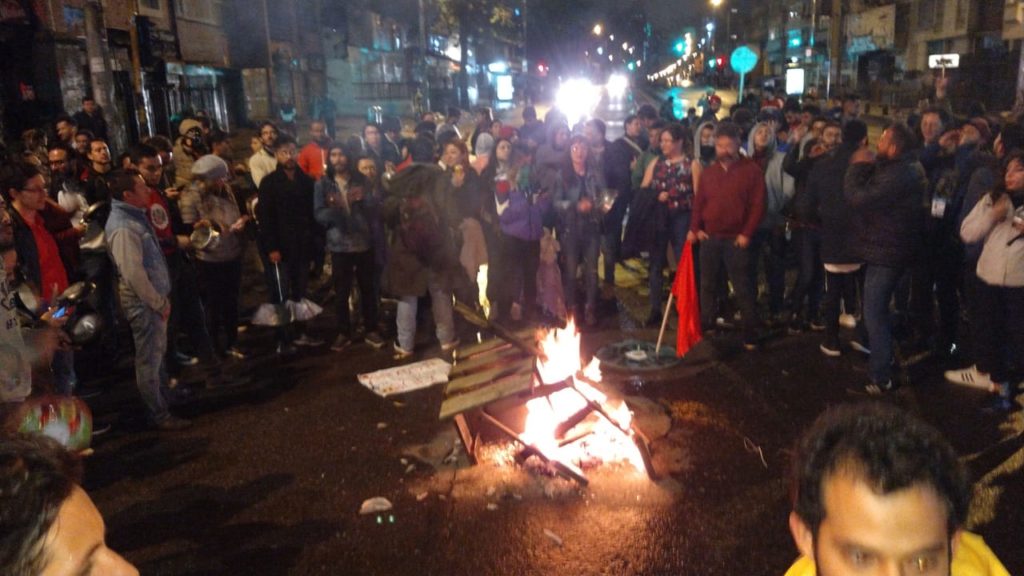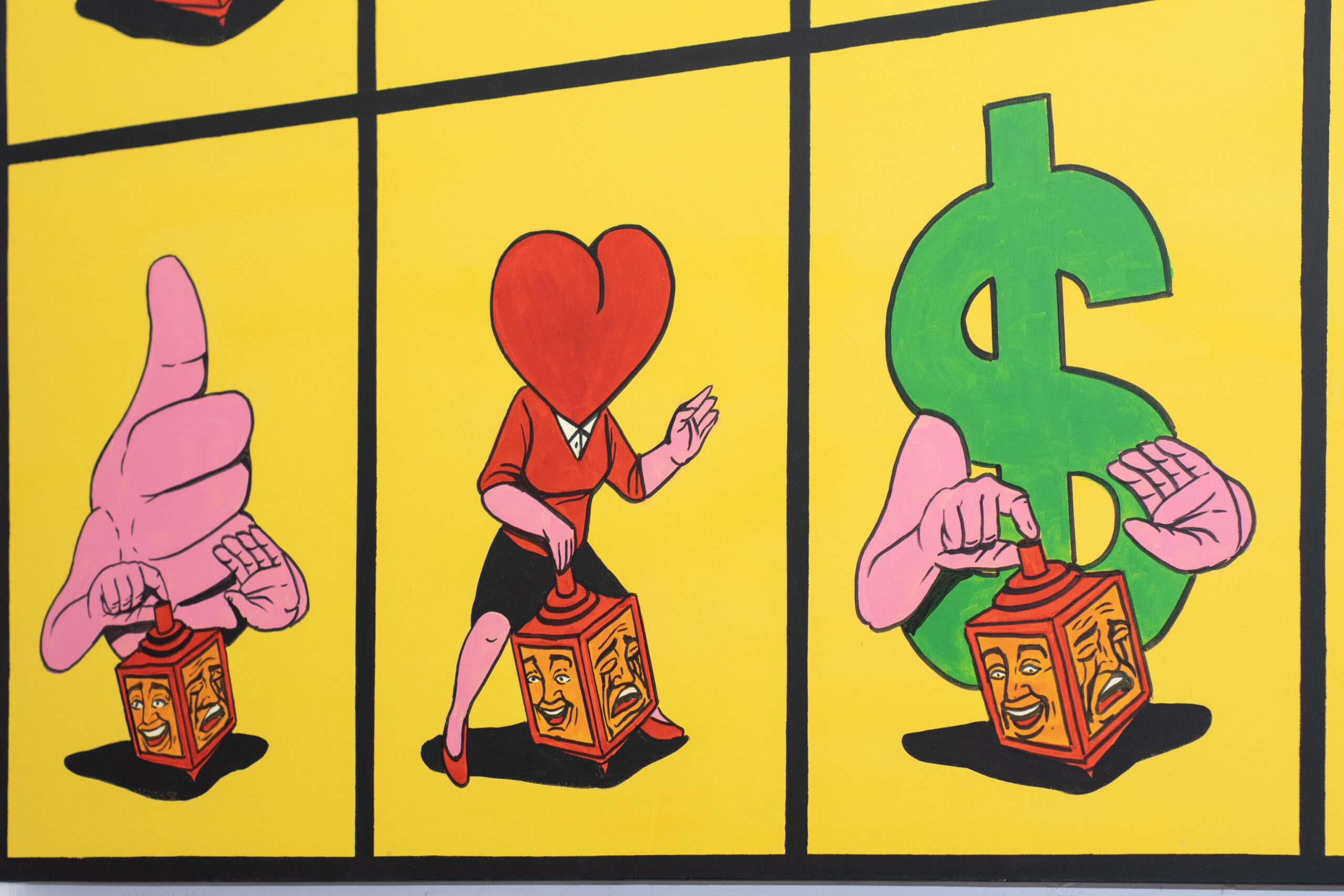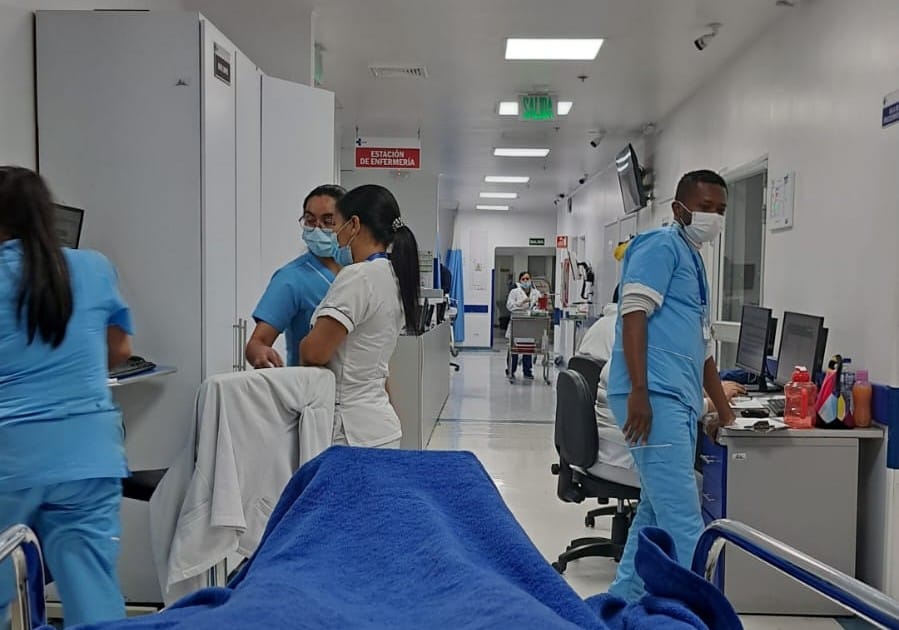Out and about in last night’s cacerolazos as spontaneous demonstrations break out across the country.

It’s 10 at night, and yet I’m walking down the Séptima in the middle of the road, late at night. There are no cars around and next to no businesses are open. It should be eerily quiet, yet the sounds of street parties drift through the cold air both ahead of me and behind me. All around Bogotá, people had taken to the streets around eight o’clock, banging pots and pans in what are called ‘cacerolazos’.
These totally spontaneous demonstrations broke out as a continuation of the earlier protests, which ended in sometimes brutal repression. They consist of ordinary citizens simply banging pots and pans to make a disturbance, somewhat like ‘the music’ of medieval Europe, although the actual clanging sounds somewhat reminiscent of early Einstürzende Neubauten. Some people took to the streets while many more supported from the safety and comfort of home.
Read more on Colombia’s national strike:
November 21 in photos
“Police has been respectful to protocols” – Peñalosa
All about Colombia’s national strike
Despite the negative reasons for hitting the streets, there was a carnival atmosphere all around. At 46 with Séptima an impromptu bonfire was lit, and Parque de los Hippies at 60 had a team of drummers helping out the pot-bangers. Hastily made barricades blocked cars from passing easily and the streets were turned back into pedestrian space. People beat their pans in a concerted fashion, coming together to raise the tempo whenever a helicopter passed over and raising their middle fingers in salute.
A neighbourly bonhomie was the overwhelming feeling present. Neighbours saluted me as I strolled around and people shared drinks and snacks. My phone lit up every minute with alert after alert telling me of protests in barrios nearby and throughout the city. Each of these alerts showed another video of ordinary people making their feelings known, and my friends and acquaintances commented on the solidarity being shown. These were not just the traditional protesters, but a real cross-section of the barrio.
Story continues below the videos
“First time our neighbours have done anything together. This is actually awesome,” commented one of our team in San Luis, while a friend in Bosa posted a video saying she was “proudly from Patio Bonito” as people shrugged off the drizzle to march down the street there. The narrative now had changed – from an earlier washout, to violence and now to what should have been. Wildcat protests all over the city, decentralised and organic, not pushing any particular point, but a dissatisfaction with the leadership of the country. Even friends in Rosales reported cacerolazos and some of the Séptima protesters were drifting down from the pricey apartments in Chapinero Alto.
Those that felt the streets could be dangerous due to the earlier police aggression had little to fear. State control was conspicuously absent as the police kept themselves at their CAIs, not venturing out far to try and regain control of the city. This was not a time for citizens to meekly follow the orders of the state – the streets had been reclaimed.





